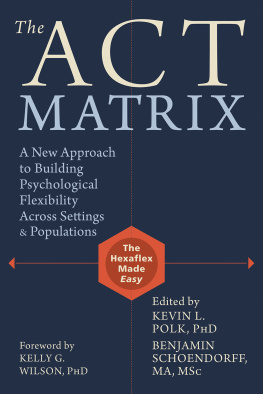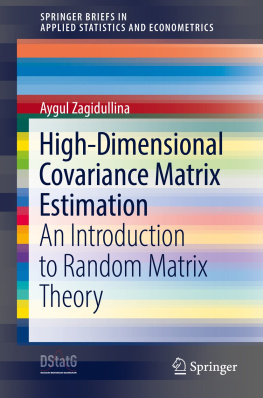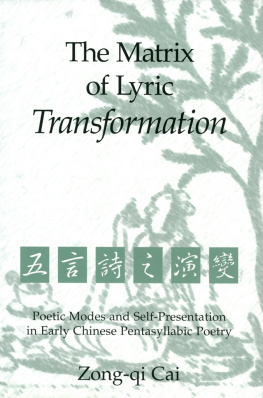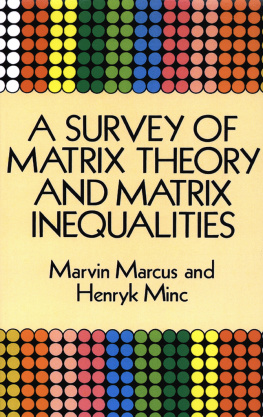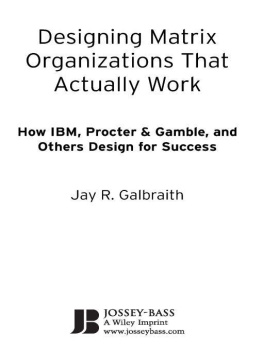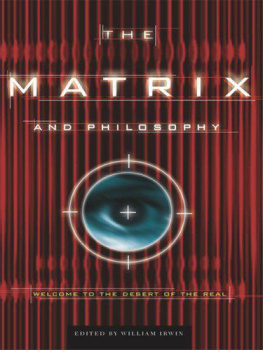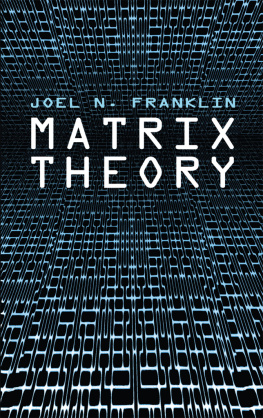
Editor Kevin L. Polk, PhD, is a clinical psychologist who has been a practicing for twenty-three years, primarily helping veterans and others with troubling trauma memories. For the past eight years he has dedicated himself to the study of acceptance and commitment therapy (ACT), spending close to 20,000 hours studying the philosophy and theory behind ACT, and learning and designing ACT interventions. He is a peer-reviewed ACT trainer who is passionate about teaching others how to use the matrix to increase psychological flexibility and valued living. Find out more at http://www.drkevinpolk.com.
Editor Benjamin Schoendorff, MSc, MSc, is a clinical psychologist with a passion for disseminating contextual psychotherapies. He is the author of two French language books, an ACT self-help book, and a clinicians manual based on the matrix diagram. A peer-reviewed ACT trainer, he leads international workshops on integrating ACT and relationship-focused functional analytic psychotherapy through the use of the matrix. You can find out more at http://www.ipc-cpi.com.
Foreword writer Kelly G. Wilson, PhD, is associate professor of psychology at the University of Mississippi. He is a central figure in ACT, and was one of the authors of the landmark Acceptance and Commitment Therapy. Wilson is among the most sought-after ACT trainers. His popular experiential workshops touch thousands of clinicians and students each year. Find out more at http://www.onelifellc.com.
I love the matrix. Sometimes you need a way of thinking about ACT that is so focused on what is critical and so simple that you cannot forget it. Thats the matrix. The number of situations that call for it is stunning: as a tool for difficult clients; when you feel lost in therapy; for an elevator speech with a business person; to do a thirty-minute talk with a lay group; to guide a chat with a school principal; and on and on. This is the first book on the matrix and how to use it. Let me simplify it for you: Get it. Read it. Use it.
Steven C. Hayes, PhD, cofounder of ACT and professor of psychology at the University of Nevada
This book is a must-have for anyone interested in practicing or teaching ACT.
JoAnne Dahl, PhD, professor of psychology at Uppsala University, Sweden, and coauthor of ACT and RFT in Relationships
The matrix method of delivering ACT has experienced a rapid increase in popularity in the last few years. The ACT Matrix provides a simple, mindful framework for delivering ACT in a wide number of contexts, including areas involving emotional disorders, eating disorders, addiction, pain, post-traumatic stress disorder (PTSD), and pro-social behavior. It can be used in the clinic, in schools, in organizations, or any setting [where someone] would benefit from increased psychological flexibility and resilience. If you would like a quick, accessible way to learn and start practicing ACT, this book is for you.
Joseph Ciarrochi, PhD, author of the best-selling teen book, Get Out of Your Mind and Into Your Life for Teens
The matrix is transparent and user-friendly for both mental health and medical providers working in brief treatment settings. As a matrix practitioner, you will help many people, including those with addictions, chronic pain, and relationship problems. Add The ACT Matrix to your bookshelf now and benefit from Polk and Schoendorffs numerous examples of how to use this highly accessible tool.
Patricia J. Robinson, PhD, author of Real Behavior Change in Primary Care and Brief Interventions for Radical Change
In The ACT Matrix, editors Kevin Polk and Benjamin Schoendorff simplify the entire ACT model into two basic distinctions. The first two chapters of the book, written by the editors and collaborators, summarize the matrix diagram by discriminating between sensory and mental experiencing and between moving toward versus away from your values. These are well-written and entertaining. I was unfamiliar with the matrix, and after reading these introductory paragraphs, I had a good feel for what the work would look and feel like with a client in the therapy room.
The remaining chapters of the book apply to specific settings, presenting problems and populations. I believe that you could skip to whatever work you most commonly do, or read straight througheither would be useful! These chapters are written by practitioners who are experts in each of the areas, and the subtle details of how the matrix can be used differently with each issue really shine through. I believe this will be a great addition to many office bookshelves, and I would say to pick up a copy right away!
Amy R. Murrell, PhD, associate professor at the University of North Texas

Publishers Note
This publication is designed to provide accurate and authoritative information in regard to the subject matter covered. It is sold with the understanding that the publisher is not engaged in rendering psychological, financial, legal, or other professional services. If expert assistance or counseling is needed, the services of a competent professional should be sought.
The Bulls Eye and Join the DOTS from ACT MADE SIMPLE by Russ Harris, copyright 2009 Russ Harris. Used by permission of New Harbinger Publications, Inc.
Distributed in Canada by Raincoast Books
Copyright 2014 by Kevin L. Polk and Benjamin Schoendorff
New Harbinger Publications, Inc.
5674 Shattuck Avenue
Oakland, CA 94609
www.newharbinger.com
All Rights Reserved
Acquired by Tesilya Hanauer; Cover design by Sara Christian; Edited by Jasmine Star; Text design by Tracy Marie Carlson; Indexed by James Minkin
Library of Congress Cataloging-in-Publication Data
The ACT matrix : a new approach to building psychological flexibility across settings and populations / edited by Kevin L. Polk, PhD, and Benjamin Schoendorf, MSc, MPs.
pages cm
Includes bibliographical references and index.
ISBN 978-1-60882-923-1 (pbk. : alk. paper) -- ISBN 978-1-60882-924-8 (pdf e-book) -- ISBN 978-1-60882-925-5 (epub) 1. Acceptance and commitment therapy. 2. Mental illness--Psychological aspects. 3. Adaptability (Psychology) I. Polk, Kevin L., 1955- II. Schoendorf, Benjamin. III. Title: Acceptance and commitment therapy matrix.
RC489.A32A28 2014
616.891425--dc23
2013050528
The love of my life, Mary Alyce Burkhart, PhD. Her love, support, and collaboration lift me each and every day.
Kevin Polk
To all the people who have made it their lifes mission to ferry others through the dark straits of their suffering over into a life worth living. Ours is a sacred calling, and my fervent hope is that youll find within these pages a seaworthy vessel in which to safely steer through the waters of this scary, wondrous, and ultimately beautiful life.
Benjamin Schoendorff
Contents
Foreword
Since I arrived at the University of Mississippi in 2000, I have run an acceptance and commitment therapy seminar every other spring. The seminars are odd. I host them at my home. They are typically composed of seven or eight graduate students. I use what one might generously describe as a fluid syllabus. (That is, it can really only be written after the class has happened.) Ole Miss has allowed me considerable latitude to use these seminars as a place for intellectual and experiential play. We pursue interesting topics. And, if we see something new and interesting, we drop everything and chase it.

